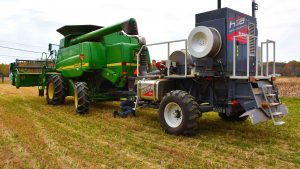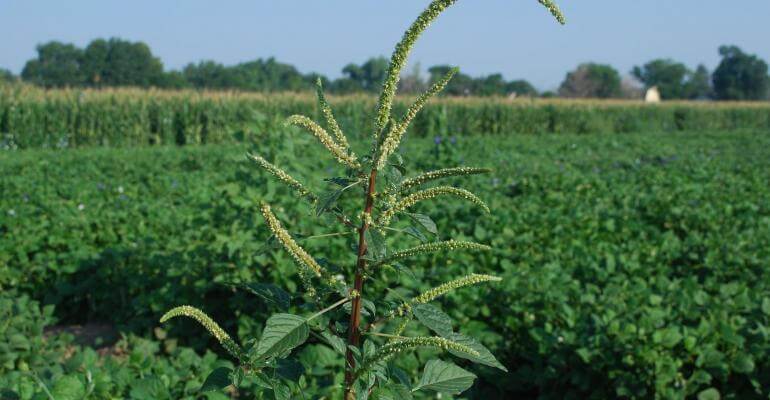“Weeds are winning the war against herbicide resistance.”
This stark analysis is part of the title of a new Scientific American deep-dive into efforts to battle weed resistance. The author, Brooke Borel, summarizes the latest science, including research done at North Carolina State University. Scientists at NC State reached the sobering conclusion that “[there is a] considerable chance that the evolution of pest resistance will outpace human innovation.” In other words, the likelihood that we will be able to “herbicide science” — or spray — our way out of current crises rooted in the spread of resistant weeds is slim.
Instead, Borel highlights big new projects looking at large-scale patterns in weed resistance, and at how old farming techniques like crop rotation and cover crops can help prevent the spread of resistant weeds.
In one paper from 2017 in Pest Management Science, Adam Davis and George Fisvold make the bold claim that widespread weed resistance may “render herbicides obsolete for many major cropping systems” (Davis and Frisvold, 2017).
We feature some of Davis’ earlier work on the Managing Weeds for Healthy Kids project site. He led a team whose research, published in 2012, documented that increasing cropping system diversity effectively suppressed weeds while maintaining yields and profit, when compared to conventional, herbicide-reliant weed management systems.
The Scientific American article highlights a USDA-led effort to collaborate with academics to take a look at herbicide resistance patterns in a 15-state area in the South, mid-Atlantic, and upper Midwest. There have been few such efforts to examine weed resistance at a large scale, an example of how regulatory agencies are taking a new look at this issue.

One techinical solution being looked at is a machine from Australia called the Harrington Seed Destructor. Yes, it sounds like it belongs in an action-figure movie.
But in reality, this machine is towed behind harvest equipment to capture weed seeds and crush them into inert mush, thereby reducing the spread of resistance.
A single Palmer amaranth (shown in photo, top right) generates several hundred thousand, and even up to a million seeds, and the hope is that the Seed Destructor can be one of the “many little hammers” used to control the spread of herbicide-resistant Palmer amaranth.
The next step will be convincing farmers to change their habits. Quoted in a piece on the Harrington Seed Destructor, Davis urges that “every farmer needs to be thinking about how to do this now…There is no path forward for chemical-alone weed management. We have to reduce our reliance on herbicides because there’s nothing new in the pipeline.”
This in-depth story (also authored by Borel) describes the apparent success of the Seed Destructor in stopping the spread of resistant rye grass in Australia. Crushing weed seeds is one of many emerging technological fixes in play to help farmers deal with the resistance-driven failure of Roundup Ready, herbicide-resistant technology.
Judging by the aggressive spread of resistant weeds, farmers will need all the weed-management hammers they can get our hands on. But dealing with herbicide-resistant weed seeds at harvest time will likely cost way more than keeping weeds in check early in the cropping season through a well-designed Integrated Weed Management system.
How many times do farmers around the world have to relearn the lesson that pest problems rooted in farm management systems are more easily and cheaply avoided by fixing the system, compared to adding more chemicals and toxins into the system in the hope of fixing what ails (threatens) it.
Sources:
Brooke Borel, “Meet the Weed Seed Pulverizing Machine,” UNDARK, May 15, 2017.
Brooke Borel, “Weeds Are Winning in the War against Herbicide Resistance: Herbicides are under evolutionary threat. Can modern agriculture find a new way to fight back?,” Scientific American, June 18, 2018.
Adam S. Davis, George B. Frisvold, “Are herbicides a once in a century method of weed control?,” Pest Management Science, 2017, 73:11, DOI: 10.1002/ps.443.

